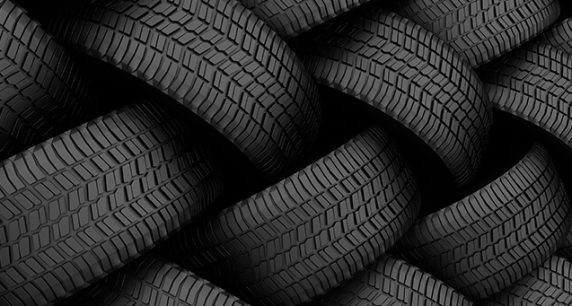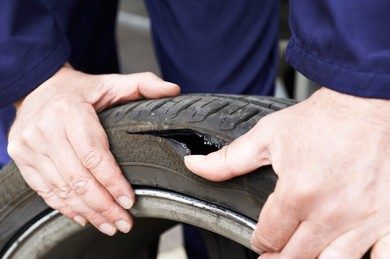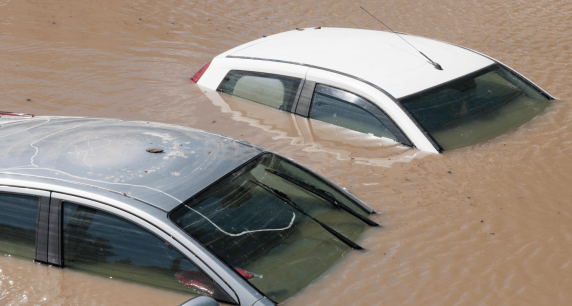Tire Replacement Guide: Why & When You Should Replace Your Tires

Do you know when to replace your tires? The good news is gauging the health of your tires isn’t as complicated as you might think. In most cases, figuring out when it’s time for a tire replacement only requires a quick look with a keen eye and maybe the help of a copper penny. You need to know what portions of the tires to look at and what the key tire replacement indicators are. In this guide, we will provide you with all the knowledge you need to accurately assess your tires, determine if they need to be replaced and when, as well as some tips for picking new ones!
In this tire replacement guide, we’ll answer these questions and beyond so that you can feel confident you’re replacing your tires with the best choices for your driving needs, local climate and vehicle safety.
WHEN SHOULD YOU REPLACE YOUR TIRES?
The most common question people ask is “How often should you replace your tires? “
Generally, there are two different factors that impact when to replace tires: wear and age.
Tire Wear: All tires eventually begin to experience wear. How the tire wears can be an indication of an issue with your alignment or tire pressure? Tire tread should wear evenly across the whole tire rather than on the inside or outside of the tire. The wear on your tires will happen regardless of how good of a driver you are, although it can be accelerated if you don’t take proper care of the tires.
Tire Age: Tire aging occurs when components of the tire, including the rubber, begin to change over time. This can happen due to environmental impacts and storage conditions, as well as the amount of usage the tire sees when being driven, or the tire sitting with no use.

Of course, unless you’re a tire expert, it can be difficult to know exactly when tire wear and age indicate that a tire is no longer safe to drive and needs to be replaced. Every tire has an indication that states when it was made, down to the week and year.
WHAT ARE THE BASICS?
There is no way to tell exactly how long a tyre lasts. The lifespan and mileage of a tyre depends on a combination of factors: its design, the driver’s habits, the climate, the road conditions and the care that’s put into the tyres.
A few milestones and tips:
1- Keep five years in mind
After five years or more in use, your tyres should be thoroughly inspected at least once per year by a professional.
2- Ten years is a maximum
If the tyres haven’t been replaced 10 years after their date of manufacture, as a precaution, our recommendations are to replace them with new tyres. Even if they appear to be in a usable condition and have not been worn down to the tread wear indicator. This applies to spare tyres as well.
3- Proper care expands a tyre’s lifespan
If you take good care of your tyres’ air pressure, tread wear, alignment and so on, you can increase their longevity.
WHY YOU SHOULD REPLACE YOUR TIRES

Knowing how often to replace tires isn’t just about taking good care of your vehicle and preventing expensive mistakes. Tires are an extremely important part of your vehicle’s safety.
Worn or old tires can lead to a variety of problems, including:
- Compromised road grip due to a worn-down tread
- Blowouts that leave you stranded or even cause you to crash
- Difficulty stopping and braking effectively
Additionally, uneven wheel alignments and balance problems will not only cause irregular and premature tire wear, they can cause expensive problems for your vehicle, leaving you dealing with a hefty car repair bill in the future.
Each year, roughly 11,000 tire-related wrecks occur on the road. Don’t blow off tire maintenance as something only “car people” do. Every driver on the road should are about the health and safety of their passengers and vehicles.
WHAT FACTORS CAN CAUSE DAMAGE TO THE TIRES?

Many people ask “How long do tires last on average? “
The problem is, there’s not a set answer to that question – due to the variety of factors that can lead to a necessary tire replacement. These factors include:
- Tire design from the manufacture (Most OEM tires last for up to 80,500 KM so they will have very different time in use)
- A lack of attention to basic tire maintenance (checking the air pressure, tire rotations, alignment, visible wear, etc.)
- Not using the right tires for different seasons and terrains.
- Potholes, obstacles, curbs, sharp objects, and speed bumps
- Climate conditions (extreme hot or extreme cold can accelerate wear and tear)
- Excessive braking or acceleration
- Driving for long periods at high speeds
Every driver faces different conditions and cares for their cars differently. The bottom line is that you need to be aware of your own driving habits, environment, and tires to ensure you’re replacing your tires when necessary.
SIGNS THAT YOUR TIRES NEED TO BE REPLACED
The following tips will show you how to tell if tires are worn and need to be replaced soon. Although it is always best to seek professional help with tires, these signs will indicate that you should begin researching new tires for your car.
- Tread Wear
A tire’s tread depth is measured in 32nds of an inch. New tires have from 9/32” to 11/32” of tread material. A tire is considered unsafe when the tread is worn down to 2/32”. - Bubbles and Bulges

A bulge on your tire usually indicates that the rigid internal frame of the tires has been damaged, allowing air pressure to reach the flexible outer layers of the tire. Any tires with sidewall bulges or bubbles should be replaced immediately, even if the tread status is acceptable. - Vibration
If your tires have been worn down unevenly, you may feel a vibration in the steering wheel when driving. Vibration can also be caused by poor alignment so it is important to have a tire professional determine the cause of the vibration. - Sidewall Cuts or Cracks

Tire age is a common cause of tire sidewall cracking. All tires are subjected to different harsh conditions, and as a result, the rubber in the tires naturally degrades over time. Imagine an old rubber band that’s brittle and easily broken. The same effect happens to tires, even if the tires aren’t in use and are being stored in a place where cracking can occur. Typically, cracking is caused by sunlight, excessive heat, road surfactants and ozone exposure. Cuts, on the other hand, are typically caused by force – like hitting a rock or something sharp. - Embedded nails or stones

Obviously, if something is lodged in the tire, the issue needs to be addressed immediately. Even if the hole isn’t causing excessive leaking, ignoring a hole from something like a nail can lead to problems for the driver later on. Moisture can leak into the tire, causing the steel parts to rust. Lodged items can weaken the area of the tire and possibly lead to dangerous blowouts if not dealt with in a timely manner. - Visible damage. Abnormal wear patterns could indicate wheel misalignment, improper inflation pressure, a need for a tire rotation, or perhaps all of the above.
- Damaged valve caps. If the cap can’t be tightened enough, it will continuously loosen. If it’s too tight, the thread on the stem may become stripped. A damaged valve cap can leak air and also allow dirt, moisture and debris to enter the tire.






